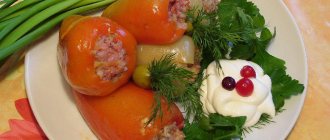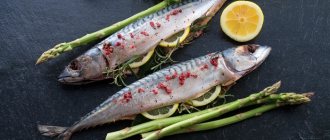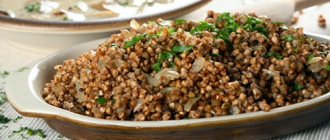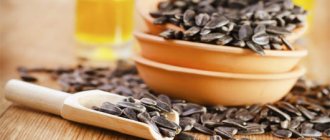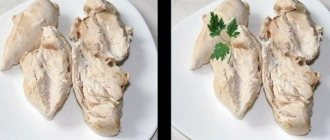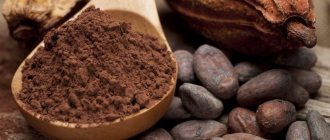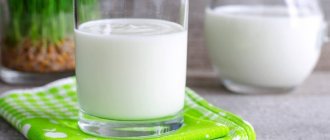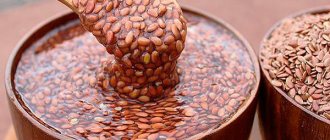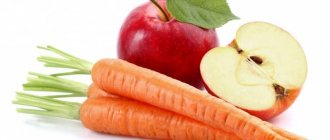The 20th and 21st centuries are the time of food allergies. If previously boys and girls, as well as their parents, suffered from allergies to citrus fruits, chocolate and nuts, today the situation has worsened and new, previously unknown allergens have appeared: lactose and gluten .
The fight against gluten (gluten) began in the West, where adults do not allow children to even come close to white bread, famous people daily repeat from the TV screen about life without wheat and eternal youth, and the best chefs create gluten-free menus. What is wrong with the unfortunate gluten protein? What products contain it and how to overcome an allergic reaction to it?
What is gluten, and why is it harmful and dangerous?
What is gluten, and why is it harmful and dangerous?
Nowadays, when buying food in stores, it has become fashionable to look at packaging and look for additives that are hazardous to health. So, what is gluten, and why is it harmful and dangerous?
- Gluten is a complex natural protein found in many grains. It can be found in baked goods, pasta, beer, and foods made from oats, rye and barley. Gluten is a gray, odorless gluten.
- Wheat contains a lot of gluten. It is also called gluten. Thanks to gluten, the dough rises well and becomes elastic.
- The danger of this substance lies in the ability of gluing together other proteins that enter the intestines with food. Gluten damages the walls of the small intestine and clogs the blood vessels of the brain and heart.
- Joints, liver and other human organs are affected negatively. This substance begins to be deposited in the tissues, clogging the intestines and blood vessels. If the walls of the small intestine are damaged by gluten, then harmful substances begin to enter the blood through them.
- The modified form of gluten poses a great danger to human health.
Important: Be aware of food products that are labeled as " hydrolyzed vegetable protein " or " textured vegetable protein ." Under all these names lies dangerous gluten.
If the cells of a healthy body can cope with natural gluten, then they cannot cope with modified gluten. All tissues in which the body's immune cells have caught gluten molecules are affected.
Sorghum flour
Sorghum flour is made from an ancient grain that has been around for over 5,000 years. Sorghum is gluten-free and is considered the fifth most important grain in the world ().
It has a light color and texture, and a mild, sweet aroma. Because sorghum flour is heavy and dense, it is often mixed with other gluten-free flours or used in recipes that call for a small amount of flour.
Sorghum is high in fiber and protein, which can help slow the absorption of sugar. It also contains an abundance of the mineral iron, as well as antioxidants that help fight inflammation (, ,).
Sorghum flour may be contaminated with gluten during processing. The label on a package of sorghum flour should say “Gluten Free.”
Summary:
Research shows that sorghum flour contains nutrients that may help reduce inflammation and balance blood sugar levels.
Gluten intolerance and gluten allergy in adults and children: how does it manifest itself, what are the symptoms?
Gluten intolerance and gluten allergy in adults and children: how does it manifest itself, what are the symptoms?
Gluten is especially dangerous for those people who have a genetic predisposition and individual intolerance.
- The body of a healthy person copes well with digesting, but only natural gluten. In addition, cereals contain useful vitamins and microelements that are necessary for the functioning of many organs.
- But people with allergic manifestations should be careful when consuming foods containing gluten, especially modified substances and others.
- According to statistics, one person out of 135 examined patients is allergic to gluten.
How does gluten intolerance and gluten allergy manifest in adults and children, what are the symptoms? An allergy to this substance can be severe or occur without symptoms at all. It all depends on the degree of resistance of the body. The most common symptoms of a gluten allergy are:
- aching pain in the abdominal area that does not go away for a long time;
- flatulence, diarrhea or, conversely, constipation;
- steatorrhea - undigested fat in stool - detection occurs in the laboratory;
- fatigue and fatigue;
- weight gain;
- high skin sensitivity - numbness, itching, tingling, burning;
- headaches, pain in joints and muscles;
- constant thirst;
- burning sensation in the throat.
Young children experience constant tearfulness, constipation, poor appetite, and rapid weight gain. A gluten allergy in a child requires special attention. Treatment usually lasts from several months to 2-3 years.
Important: Allergy sufferers are strictly prohibited from consuming food products with food additives labeled as E with a number.
Blood test for gluten intolerance
Blood test for gluten intolerance
Gluten intolerance is detected in the laboratory using a special allergy test. The immune system of a person with a gluten allergy perceives this substance as a foreign material. She begins to attack him, so even the smallest doses cause severe allergies.
An enzyme immunoassay blood test for gluten intolerance allows you to determine the level of antibodies in the blood serum. If the number of antibodies is large, it means that the human body is fighting an allergic reaction.
The absence of deviations in the level of antibodies indicates that the person does not have allergies. The test result is usually ready within 7 days.
Products containing gluten: list, table
Products containing gluten: list, table
Record holders for gluten content are wheat, rye, barley, oats. In the food industry, vegetable protein is obtained from these crops. This substance is then mixed with water to create a modified enzyme or additive that is included in products of different categories. List:
- bread, bakery products, flour;
- sausage, frankfurters and other products with added meat;
- alcoholic drinks made from cereals: beer, vodka, whiskey;
- chocolate, sweets;
- ketchup, mayonnaise, various sauces.
Detailed table with products containing gluten:
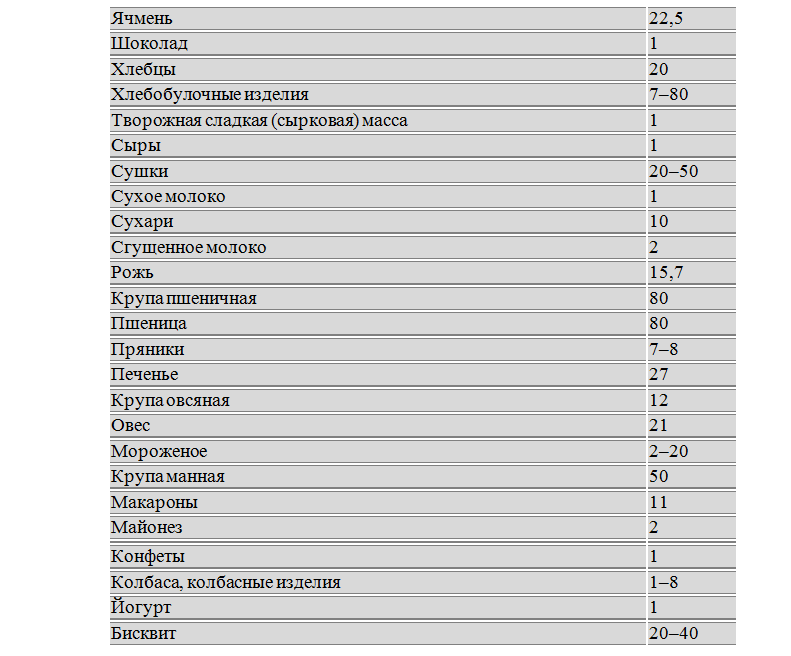
Products containing gluten: table
Gluten is also found in some medications and dietary supplements:
Foods Containing Gluten: Table of Supplements and Medicines Containing Gluten
Chickpea flour
Chickpeas are part of the legume family.
Chickpea flour is made from dry chickpeas and is also known as garbanzo flour and besan flour.
Chickpeas have a nutty flavor and grainy texture, and are popular in Middle Eastern and Indian cuisine. Chickpea flour is used to make falafel, hummus and socca flatbreads.
This product is a good source of fiber and vegetable protein. These nutrients work together to slow digestion, increase feelings of fullness, and help control body weight (, , ,).
Chickpea flour is also rich in minerals such as magnesium and potassium, which play a positive role in promoting heart health (, ,).
Cross-contamination can occur if you purchase some processed foods that are made with other flours that contain gluten.
Read more about the benefits of chickpeas for human health on this page - Chickpeas: health benefits and harms.
Summary:
Chickpea flour is rich in plant protein, fiber and other nutrients that may help protect against cardiovascular disease.
Gluten-free products: list, table
There are many foods that do not contain gluten. If you have only recently been diagnosed with an allergy to this substance, then it is better to write down which foods contain gluten and which do not. Then you will get used to proper nutrition and will know which foods you can eat and which you cannot.
So, the list of gluten-free products is a table:
Gluten-free products: list, table
Interesting features of gluten
Here are some more interesting facts about gluten in food and drinks.
- Natural milk does not contain this component at all, but if a thickener has been added to products based on it, then it is likely that the presence of protein will be detected.
- Many people are interested in the question: is there gluten in potatoes? After all, this beloved root vegetable is present in national dishes, and in almost all soups? The vegetable itself does not contain gluten. This makes it an excellent alternative to cereal on a gluten-free diet. But traces of wheat protein are already found in French fries or chips.
- Note to beer lovers: this drink also contains gluten, which is added to the drink during the production process.
Do not forget that nutritionists strongly recommend reducing the consumption of wheat protein with age, since the ability to digest it is lost in adulthood.
Gluten free diet: menu
Gluten-free diet: menu
Excluding gluten from the diet helps improve immunity, metabolism, digestion and cleanse the intestines. The waste products that are deposited in the small intestine when eating foods rich in gluten will be excreted from the body when using a gluten-free diet. Your health will improve, weight will begin to decrease, fatigue will disappear and a surge of strength will appear.
The gluten-free diet is widespread among show business stars and actors. Sample menu for the week:
Monday
Breakfast:
- two hard-boiled eggs;
- freshly brewed tea - 1 or 2 glasses.
Dinner:
- vegetarian vegetable soup - 150 grams;
- boiled beef - 100 grams;
- fresh vegetables - 50-100 grams;
- thin berry jelly.
Dinner:
- boiled fish - 100 grams;
- baked vegetables - 100 grams;
- herbal tea - 1 glass.
Tuesday
Breakfast:
- boiled millet porridge - 150 grams;
- herbal tea from thyme or oregano - 1-2 glasses.
Dinner:
- mushroom soup with vegetables - 150 grams;
- boiled pork - 70 grams;
- steamed vegetables - 100 grams;
- fruit juice without sugar.
Dinner:
- baked fish - 100 grams;
- buckwheat porridge - 100 grams;
- fresh vegetables - 150 grams;
- freshly brewed tea - 1 glass.
Wednesday
Breakfast:
- corn porridge - 150 grams;
- chicken fillet - 100 grams;
- oregano tea with mint - 1-2 glasses.
Dinner:
- meat broth with potatoes - 150 grams;
- boiled beef - 100 grams;
- buckwheat porridge - 100 grams;
- fresh salad - 50 grams;
- berry juice without sugar - 1 glass.
Dinner:
- boiled potatoes, seasoned with vegetable oil - 150 grams;
- stewed mushrooms - 100 grams;
- steamed vegetables - 70 grams;
- tea - 1 glass.
Thursday
Breakfast:
- boiled rice seasoned with butter - 150 grams;
- egg - 1 piece;
- milk - 1 glass.
Dinner:
- vegetarian soup - 150 grams;
- chickpea or lentil porridge - 100 grams;
- boiled pork - 70 grams;
- chamomile tea - 1 glass.
Dinner:
- steamed vegetables - 150 grams;
- natural boiled shrimp meat - 70 grams;
- unsweetened fruit drink - 1 glass.
Friday
Breakfast:
- millet porridge - 150 grams;
- curd mass made from natural cottage cheese, sour cream and milk - 70 grams;
- tea from twigs of any fruit tree - 1-2 glasses.
Dinner:
- meat broth with potatoes and vegetables - 150 grams;
- steamed chicken cutlets - 100 grams;
- vegetables baked in the oven with the addition of vegetable oil - 100 grams;
- berry juice - 1 glass.
Dinner:
- steamed fish cutlets - 100 grams;
- buckwheat porridge - 100 grams;
- fresh vegetables - 70 grams;
- freshly squeezed carrot or apple juice - 1 glass.
Saturday
Breakfast:
- steamed fish - 70 grams;
- boiled rice - 150 grams;
- fruit compote without sugar - 1 glass.
Dinner:
- meat broth with beef meatballs - 150 grams;
- baked vegetables - 100 grams;
- boiled potatoes - 70 grams;
- Grated apple juice - 1 cup.
Dinner:
- buckwheat porridge - 150 grams;
- boiled chicken meat - 100 grams;
- fresh green salad - 70 grams;
- kefir or fermented baked milk - 1 glass.
Sunday
Breakfast:
- boiled quinoa - 150 grams;
- steamed fish - 50 grams;
- lettuce leaves - 50 grams;
- linden flower tea - 1 glass.
Dinner:
- pea and potato soup without meat - 150 grams;
- boiled brown rice - 100 grams;
- steamed chicken fillet - 100 grams;
- thin jelly without sugar - 1 cup.
Dinner:
- buckwheat pudding - 150 grams;
- steamed vegetables - 100 grams;
- tea from fruit tree branches - 1 glass.
Gluten-free diet
Bread can be eaten, but gluten-free, since synthetic gluten is added to regular baked goods. Give preference to whole grain bread without flour or yeast. This bread is more expensive than the breads you see on store shelves, but it is healthier.
If you are used to snacking for second breakfast or afternoon snack, then prepare yourself a baked apple or fruit salad in advance. Nuts or fruit jelly are also suitable for snacking. For the second dinner, you can drink a glass of kefir or milk. You can change the presented menu at your discretion by adding other gluten-free products and dishes.
Gluten-free products and recipes
Nutritionists ask to clearly distinguish between weight loss diets for obesity and diets due to gluten intolerance. You should not use the second diet as a way to change your life and lose weight. This diet should be formulated and supervised by a specialist and is prescribed only to people with gluten intolerance.
But even on such a diet you can live a full life. Here is a small list of products that do not contain gluten:
- fruits, vegetables and root vegetables,
- eggs,
- oil,
- meat,
- rice,
- spices,
- nuts,
- beans,
- quinoa and millet,
- sweet potato, etc.
Baking lovers will also be able to find an alternative for themselves. All you have to do is prepare the desserts yourself, so you can accurately monitor the composition and calorie content of the delicious masterpiece.
You can find thousands of recipes without flour or using gluten-free flour. Now it can be found in any supermarket. As a rule, this is rice, buckwheat or almond flour.
To prove the deliciousness of a gluten-free diet, here are a few recipes.
Egg omelet with cottage cheese
To prepare this dish we will need:
- spinach - 300 grams (can be replaced with any other greens);
- green onions - 1 bunch;
- chicken eggs - 4 pieces;
- low-fat cottage cheese - 0.4 kilograms;
- hard cheese - 150 grams;
- salt, favorite spices.
So, let's start cooking:
First you need to grind the cottage cheese and bring it until smooth, add eggs and grated cheese, as well as herbs. Place the mixture in a baking dish and place in the oven for 45 minutes. After the time has passed, take out the dish, sprinkle with sesame seeds and put it back in the oven for 10 minutes.
Chocolate pie
For such an appetizing and very tasty dessert without flour, we will need the following products:
- dark chocolate - 100 grams,
- sugar - 150 grams,
- cocoa powder - 100 grams,
- chicken eggs - 3 pieces.
So, let's get started and first melt the chocolate in a water bath. This must be done very carefully so that water does not get into the container with chocolate, otherwise it will peel off. Once the chocolate has melted, you can remove it from the stove and add three beaten eggs, cocoa and granulated sugar.
Line a baking dish with paper or sprinkle with flour, pour the chocolate mixture into it and place in an oven preheated to 180 degrees for half an hour. The finished chocolate cake should be slightly moist inside.
Gluten during breastfeeding: is it transmitted through breast milk?
Gluten during breastfeeding: is it transmitted through breast milk?
Scientists have conducted many studies that prove that when a nursing mother consumes gluten foods, this substance will be contained in the milk and transferred to her baby during feeding. Therefore, doctors increasingly began to diagnose infants with a gluten allergy.
To protect your child from this disease, a new mother should know that gluten is transmitted through her milk during breastfeeding. Mom is obliged to follow a gluten diet, especially if the pediatrician diagnoses her baby with an allergy. The doctor may not prescribe a blood test to detect antibodies, since a lot of blood will have to be taken from the baby. Often, pediatricians simply tell the mother to eliminate gluten-containing foods from her diet.
Summarize
- For people with celiac disease, non-celiac gluten sensitivity, or people avoiding gluten for other reasons, there are many healthy, gluten-free alternatives to regular wheat flour.
- Some gluten-free flours have more nutrients than others, making them healthier choices to include in your diet.
- Many gluten-free flours require recipe adjustments or combinations of different gluten-free flours to create a delicious final product. Be sure to rate your recipe.
- If you choose gluten-free flour, be sure to compare nutritional content, flavor profiles, and features before making your choice.
Tags: Gluten, Flour
- Related Posts
- Breakfast cereals: good or bad?
- 11 Foods That Promote Baby Growth
- 17 Healthy and Tasty Alternatives to Candy
« Previous entry
Why is gluten harmful after 40, 50 years?
Why is gluten harmful after 40, 50 years?
Gluten is dangerous because it is deposited on the intestinal walls, damaging them. Through these microscopic cracks, harmful substances begin to enter the blood, destroying internal organs, blood vessels, and the heart. Why is gluten harmful after 40, 50 years? At this age, against the background of a clogged intestine, the following ailments and diseases may appear:
- Fragile blood vessels, which leads to stroke and heart attack.
- Increased risk of cancer, diabetes.
- Irritable bowel syndrome - adhesions and other diseases.
- Damage to nerve endings, damage to blood vessels in the brain. A person loses his memory, confuses names, and begins to age quickly.
- Excess body weight or, conversely, severe thinness.
- Diarrhea, constipation, metabolism, bloating.
- Complex anemia requiring blood transfusion.
Take care of yourself : If you have a disease that is difficult to treat, it may be due to poor gluten absorption. Try going on a gluten-free diet and see if you feel better.
Why is gluten dangerous for older people?
Why is gluten dangerous for older people?
In old age, a person’s health is poor, especially if his main food throughout his life was gluten in the form of flour bread, confectionery, baked goods, sausages and other synthetic food products. The intestines are clogged, the blood vessels are fragile, the heart is weak. Why is gluten dangerous for older people if we continue to consume foods containing this substance?
The forecast is disappointing:
- Irritable intestines will lead to the formation of adhesions - in this case, surgery is not possible.
- Weak blood vessels will lead to stroke or heart attack.
- Sick joints - arthritis and other diseases will appear.
- Anemia can become a chronic disease that occurs seasonally or continuously.
These and other problems will not go away if the elderly person does not stop eating regular bread made from wheat or rye, which is on the shelves, and consumes store-bought yoghurts, sweets, pastries, and confectionery products with the addition of modified substances.
Important: If you want to improve your health, completely change your diet - switch to a gluten-free diet. But before doing this, consult your doctor so that he can assess all the risks. After all, old age is no joke. Typically, a person over 70 years of age has many concomitant chronic diseases.
Why is gluten dangerous for older people?
Gluten-free products Want to be healthy? Give preference to grain porridges, fresh vegetables, soups and natural meat. Avoid store-bought synthetic foods such as sausages, confectionery, chocolate, yoghurts, sweet curds with modified starch and gluten.
Eat what you prepare yourself, then you will know what is going into your body. If you are allergic to gluten, follow a special diet. Be healthy!
Gluton-free products
There are a number of foods that you can eat without fear, since they do not contain gluten:
- fruits and vegetables;
- fish, natural fish and meat products;
- organic corn, organic buckwheat, millet, wild rice, maize, quinoa, chickpeas, tapioca;
- spices and spices in their pure form;
- potatoes, sweet potatoes;
- nuts and legumes;
- eggs;
- butter and vegetable oils.
It is worth paying attention to the fact that some companies produce special products that do not contain gluten and are marked “Gluten Free”.

